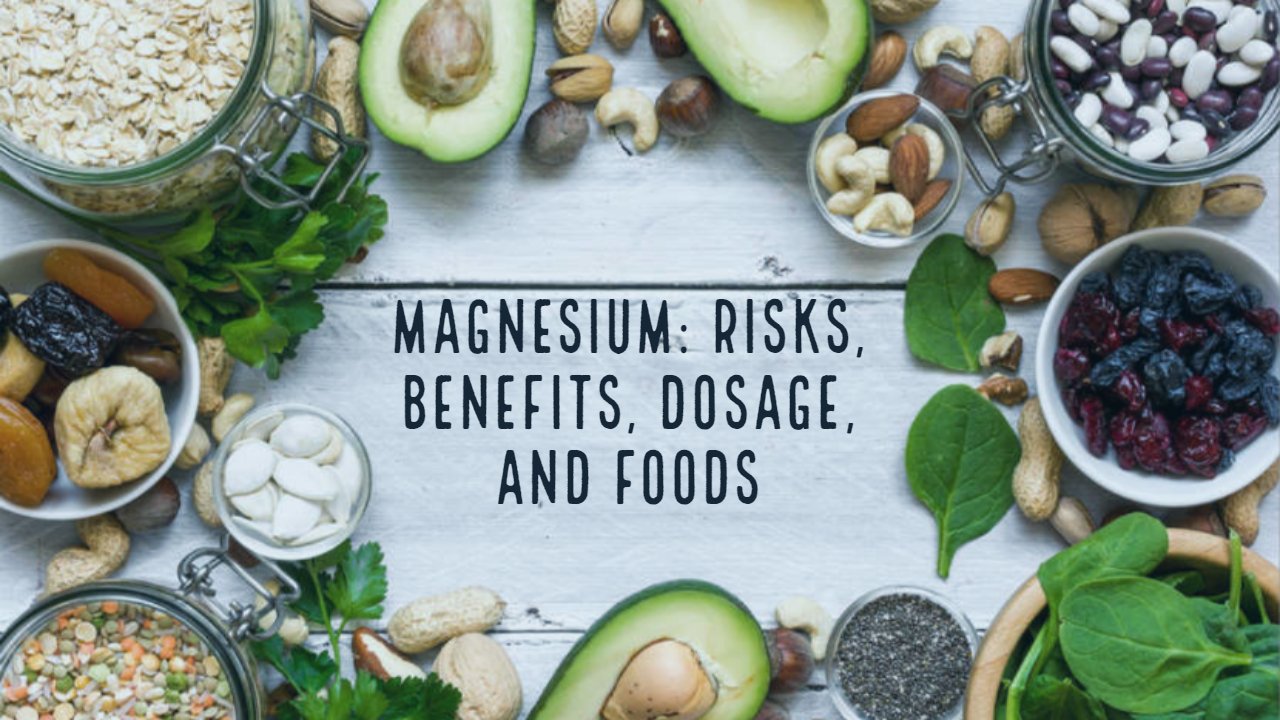Today we will discuss why magnesium is important, it’s benefits and foods that are in magnesium.
Lack of magnesium can trigger health issues
If you’re lacking magnesium your cellular metabolic function can deteriorate. Which in turn can lead to a more serious. Health issue such issues include migraine headaches, anxiety and depression, fibromyalgia, and cardiovascular disease.
Importance of magnesium for mitochondrial health

Mitochondria are tiny bacteria derived organelles that are found inside your cells. In order for your organs to function properly, they need energy. This energy is called adenosine triphosphate also known as ATP and its primary producer is mitochondria. Research has suggested that most health issues can be tracked by mitochondria dysfunction so make sure you have the right nutrients for your mitochondria.
One example of how mitochondria play an essential role is an athletic performance. In order to maintain high athletic performance, your muscles need oxygen. Your oxidative capacity relies on your mitochondria’s ability to produce ATP.
How much magnesium do you need?
Over a century ago people were getting an estimated 500 milligrams of magnesium from their diet. Today, research suggests that people are only getting 150 to 200 milligrams a day from food. Most people do not prefer to take supplements to get their magnesium dose but since the quality of naturally grown foods is no guarantee, it might be a good idea.
Dr. Carolyn Dean who is the author of the magnesium miracle suggests the RDA for magnesium is between 310-420 milligrams.
Risk factors, signs, and symptoms of magnesium deficiency

One of the primary risk factors for magnesium deficiency is eating too much-processed foods. So if you’re not eating enough leafy greens chances are you’re not getting enough magnesium. Also, magnesium gets lost through stress, lack of sleep, constant alcohol consumption, and prescription drug use. Because of this, it is no surprise that between 50-80% of Americans are thought to be magnesium deficient.
It is really tough to spot signs of magnesium deficiency but if you suddenly suffer from a charley horse or you constantly get headaches or migraines you could be lacking magnesium. Loss of appetite, nausea, vomiting or fatigue and weakness are also signs of it.
High magnesium foods

It’s essential that you find ways to get magnesium into your body. Here are the top foods that contain high magnesium. As well as all the magnesium benefits these foods contain.
Spinach
The dark leafy green that most of us were forced to eat as children is extremely high in magnesium. They can contribute to 40% of your daily vitamins. Not only will spinach help raise your magnesium levels but it can also lower your blood pressure and improve your bone health.
Beans and lentils
These are probably the most versatile and nutritious vegetables with magnesium. They are low in cholesterol and are very low in fat. They control your blood sugar level and are a strong supporter of heart health.
Edamame
For women, the high level of magnesium in edamame can help reduce PMS symptoms. It also has the ability to prevent migraines, headaches, and can also regulate your blood pressure.
Cauliflower
This high magnesium vegetable can help the parathyroid gland to produce hormones that are required for proper bone function.
Potato
This food is in almost everyone’s diet because it is rich in magnesium and potassium. It has the ability to protect you from rheumatism.
Avocados
Avocados are known for their large content of vitamins and minerals. It also supplies a decent amount of magnesium. They are also good strength for your heart and can lower your cholesterol.
Bananas
This sweet fruit can help boost the production of white blood cells which are essential for different bodily functions but they are also a great addition to your diet. If you’re looking to lose weight or reduce swelling.
Passion fruit
This high magnesium fruit can help with your digestion, boost your immune system, improve your eyesight, and improve your bone mineral density.
Pineapple
This rich source of magnesium can help strengthen your bones. Just one cup of pineapple juice can take care of 73 percent of the RDA of magnesium.
Coconut
This high magnesium fruit has the ability to take care of 10% of its daily RDA. It’s good for maintaining electrolyte levels and can help with fatigue.
Mix nuts and seeds
By consuming half a cup of pumpkin seeds. You’re getting your daily quota of magnesium.
Dark chocolate
With a single square of dark chocolate. You can expect an instant boost in energy. It can offer up to 24% of your magnesium and the antioxidants that are present in dark chocolate can help boost the overall heart health.
Whole grains
Magnesium and selenium are what whole grains contain. They help build bones and are very healthy for the immune system. By consuming whole grains on a daily basis it can help reduce the risk of heart disease and constipation.
Almonds
They contain a high consumption of magnesium, fiber, healthy fats, and vitamin E. They can help lower blood sugar levels, cholesterol levels, and blood pressure.
Non-fat Yogurt
It has also been called Greek yogurt and contains essential minerals and vitamins such as magnesium and potassium. It can help promote and strengthen bones.
Tofu
It is low in cholesterol contains a good amount of magnesium and other beneficial proteins. It also offers a large amount of oxalate which can help keep kidney stones at bay.
More than 300 different enzymes in our body rely on magnesium for proper function. This further illustrates the importance magnesium has on the biochemical processes. Many of which are essential for proper metabolic function.
Our muscle and nerve functions including the action of the heart muscle rely on sufficient magnesium. It’s not to say we can’t live without magnesium but it can be said that it would be in our body’s best interest to ensure that we at least try and maintain an average magnesium level.



